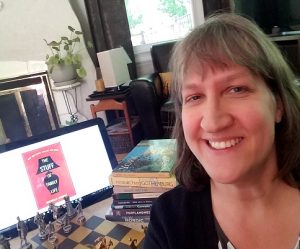 Look on Pinterest, on the front page of the newspaper, and even in our own hands as we scroll through social media feeds on our smartphones: the importance of our home objects is everywhere. I see bestselling books about how to make getting rid of our things (category by category, that is – preferably starting with those seven extra crates of shoes) joyful. I notice how there is a whole host of professions, self-help manuals, and even TV shows dedicated to dealing with the hoarding of home stuff. I see tragic reports of lead-poisoned water coming out of kitchen sinks and into cups that children drink from. I see commentary on how Millennials and Gen Xers don’t want their parents’ heirloom furniture (unless it is midcentury modern, that is). And I come across countless articles and concomitant comments articulating competing sides of the “should our kids have smartphones” debate.
Look on Pinterest, on the front page of the newspaper, and even in our own hands as we scroll through social media feeds on our smartphones: the importance of our home objects is everywhere. I see bestselling books about how to make getting rid of our things (category by category, that is – preferably starting with those seven extra crates of shoes) joyful. I notice how there is a whole host of professions, self-help manuals, and even TV shows dedicated to dealing with the hoarding of home stuff. I see tragic reports of lead-poisoned water coming out of kitchen sinks and into cups that children drink from. I see commentary on how Millennials and Gen Xers don’t want their parents’ heirloom furniture (unless it is midcentury modern, that is). And I come across countless articles and concomitant comments articulating competing sides of the “should our kids have smartphones” debate.
As a sociologist who dabbles in anthropology, consumer studies, science and technology studies, and art and design research, I also see some important social patterns worth investigating that stem precisely from the aforementioned things. Namely:
Should we be minimalists or hoarders, especially since our stuff affects individual well-being, a family’s materialism, and even the environment? The stuff in our homes reflects what we’re wrestling with in terms of our values and our identities.
Which families have access to clean water? The stuff in our homes reflects what we’re wrestling with in terms of social inequalities.
Are our children (and us, for that matter) controlled by our objects? The stuff in our homes reflects what we’re wrestling with in terms of the power of objects over us, and the norms and rules in our everyday lives that we establish to deal with them.
Is all of this “stuff about stuff” about more than just psychological differences in tastes and lifestyles? The stuff in our homes reflects what we’re wrestling with in terms of group differences in taste, spatial arrangements, and desires for certain kinds of cherished objects that signify who we are.
In my research and teaching, I pay attention to values, identities, inequalities, the power of objects, bodies, the border between public and private, and how we relate to each other as large groups. As a homeowner and lifelong fan of home décor, I pay attention to what our objects and spaces – our material culture – say about our non-material culture.
In The Stuff of Family Life: How our Homes Reflect our Lives, I pay attention to both the social underpinnings of family life as told through spaces and objects, and to the aesthetics of the spaces and objects themselves. In addition to highlighting my own research from the last two decades, I also throw in some stories about my family that I have been assured are only a little bit embarrassing.
If you read the book, you’ll take a tour of several rooms in a hypothetical home – one room per chapter – each of which loosely connects to a family life stage (from college dorm rooms to master suites, from living rooms to kitchens, from separate bedrooms in two separated parents’ homes to communal dining rooms). In each room I highlight not only what we need to know about contemporary families, but also how two objects found within that room signify and shape family roles, relationships, and inequalities.
And so, if you’ve ever wanted to read the story of contemporary family life as told through LEGO, stuffed animals, family photo albums, smartphones, heirloom dishes, power tools, and even love letters, you may enjoy reading this book and then putting it on your bookshelf next to your other cherished objects.
Michelle Janning is Professor of Sociology at Whitman College and Chair, Council on Contemporary Families. Her book The Stuff of Family Life: How our Homes Reflect our Lives was released this week from Rowman & Littlefield.

Comments